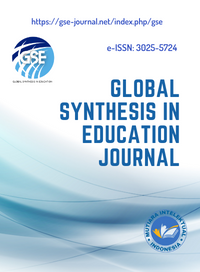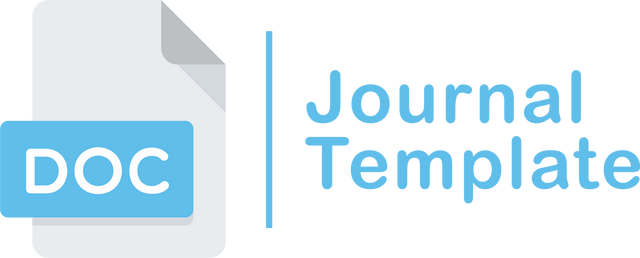Fusing Corpus-Based Analysis with Content and Language Integrated Learning: Transforming Online Language Proficiency Development
DOI:
https://doi.org/10.61667/p0kmy083Keywords:
ELT, Language Development, Online Learning, Integrated LearningAbstract
The integration of corpus-based analysis with Content and Language Integrated Learning (CLIL) offers a promising pedagogical framework to enhance online language proficiency development. Against the backdrop of increasing globalization and the need for effective language and content instruction, this study investigates the potential of merging these two methodologies to address gaps in traditional language education. The objective is to explore how corpus-based tools can enhance CLIL curricula by providing authentic, subject-specific language inputs and fostering critical thinking, cultural awareness, and learner autonomy.
A mixed-methods approach was adopted, combining quantitative and qualitative methods. Quantitative analysis involved pre-tests and post-tests of vocabulary acquisition, grammar accuracy, and subject-specific terminology comprehension for experimental and control groups. The experimental group utilized corpus-based CLIL tools, while the control group followed traditional CLIL methods. Qualitative data were gathered through surveys, interviews, and case studies to capture learner and educator experiences, engagement, and usability of the proposed approach. Findings revealed that the experimental group demonstrated significantly greater improvements in language proficiency, with 80%-100% gains across metrics compared to 30%-50% gains in the control group. Qualitative
References
Adipat, S. (2021). Developing Technological Pedagogical Content Knowledge (TPACK) through Technology-Enhanced Content and Language-Integrated Learning (T-CLIL) Instruction. Education and Information Technologies, 26(5), 6461–6477. https://doi.org/10.1007/s10639-021-10648-3
Adipat, S. (2023). Inextricable Connection: World Englishes, Language Diversity, and Cross-Cultural Communication. Journal of Educational and Social Research, 13(1), 166–174. https://doi.org/10.36941/jesr-2023-0015
Banegas, D. L., & del Pozo Beamud, M. (2022). Content and Language Integrated Learning: A Duoethnographic Study about CLIL Pre-Service Teacher Education in Argentina and Spain. RELC Journal, 53(1), 151–164. https://doi.org/10.1177/0033688220930442
Banegas, D. L., Poole, P. M., & Corrales, K. A. (2020). Content and language integrated learning in Latin America 2008-2018: Ten years of research and practice. Studies in Second Language Learning and Teaching, 10(2), 283–305. https://doi.org/10.14746/ssllt.2020.10.2.4
Banegas, D. L., & Zappa-Hollman, S. (2023). THE ROUTLEDGE HANDBOOK OF CONTENT AND LANGUAGE INTEGRATED LEARNING. In The Routledge Handbook of Content and Language Integrated Learning. https://doi.org/10.4324/9781003173151
Birhan, A. T. (2023). Effects of using corpus-based instruction on students’ critical thinking skills and perceptions in academic writing classes. JALT CALL Journal, 19(2), 197–215. https://doi.org/10.29140/jaltcall.v19n2.1040
Campillo-Ferrer, J.-M., & Miralles-Martínez, P. (2022). Primary School Teachers’ Perceptions of the Level of Development of Low-Order Cognitive Skills Under the Content and Language Integrated Learning Approach. Frontiers in Education, 7. https://doi.org/10.3389/feduc.2022.815027
Chen, X., Zou, D., & Xie, H. (2024). Technologies in content and language integrated learning: types, purposes, and outcomes. International Journal of Mobile Learning and Organisation, 18(4), 461–495. https://doi.org/10.1504/IJMLO.2024.141807
Cimermanová, I. (2021). A review of European research on content and language integrated learning. Integration of Education, 25(2), 192–213. https://doi.org/10.15507/1991-9468.103.025.202102.192-213
Dalton-Puffer, C. (2011). Content-and-language integrated learning: From practice to principles? Annual Review of Applied Linguistics, 31, 182–204. https://doi.org/10.1017/S0267190511000092
Deng, F., & Rasinski, T. V. (2021). A Computer Corpus-Based Study of Chinese EFL Learners Use of Adverbial Connectors and Its Implications for Building a Language-Based Learning Environment. ACM Transactions on Asian and Low-Resource Language Information Processing, 20(5). https://doi.org/10.1145/3457987
Díaz-Martín, C. (2023). Professional Development of Pre-Service Language Teachers in Content and Language Integrated Learning: A Training Programme Integrating Video Technology. Languages, 8(4). https://doi.org/10.3390/languages8040232
Diaz-Sanahuja, L., Miralles, I., Granell, C., Mira, A., González-Pérez, A., Casteleyn, S., García-Palacios, A., & Bretón-López, J. (2022). Client’s Experiences Using a Location-Based Technology ICT System during Gambling Treatments’ Crucial Components: A Qualitative Study. International Journal of Environmental Research and Public Health, 19(7). https://doi.org/10.3390/ijerph19073769
Eltoum, R. A. (2023). Content and language integrated learning (CLIL) and the linguistic difficulties of Saudi students learning algebra. Journal of Immersion and Content-Based Language Education, 11(1), 55–89. https://doi.org/10.1075/jicb.20009.elt
Goris, J. A., Denessen, E. J. P. G., & Verhoeven, L. T. W. (2019). Effects of content and language integrated learning in Europe A systematic review of longitudinal experimental studies. European Educational Research Journal, 18(6), 675–698. https://doi.org/10.1177/1474904119872426
Heliawati, L., Rubini, B., & Firmayanto, R. (2020). The effectiveness of content and language integrated learning-based teaching material in the topic of the nature of matter on scientific literacy. Journal for the Education of Gifted Young Scientists, 8(3), 1061–1070. https://doi.org/10.17478/JEGYS.736654
Hu, H. (2023). Emerging From Content and Language Integrated Learning and English-Medium Instruction, is CLIL-ised EMI the Next Trend of Education? Higher Learning Research Communications, 13(2). https://doi.org/10.18870/hlrc.v13i2.1422
Hüttner, J., & Dalton-Puffer, C. (2024). Building disciplinary literacies in content and language integrated learning. In Building Disciplinary Literacies in Content and Language Integrated Learning. https://doi.org/10.4324/9781003403685
Hüttner, J., & Smit, U. (2014). CLIL (Content and Language Integrated Learning): The bigger picture. A response to: A. Bruton. 2013. CLIL: Some of the reasons why ... and why not. System 41 (2013): 587-597. System, 44(1), 160–167. https://doi.org/10.1016/j.system.2014.03.001
Itoi, K. (2024). Fostering Inclusive Learning and 21st-Century Skills: Creating Translanguaging Spaces in University Content and Language Integrated Learning Courses. International Journal of Applied Linguistics (United Kingdom). https://doi.org/10.1111/ijal.12643
Liang, Y., Zhang, G., Xu, F., & Wang, W. (2020). User Acceptance of Internet of Vehicles Services: Empirical Findings of Partial Least Square Structural Equation Modeling (PLS-SEM) and Fuzzy Sets Qualitative Comparative Analysis (fsQCA). Mobile Information Systems, 2020. https://doi.org/10.1155/2020/6630906
Lopriore, L. (2020). Reframing teaching knowledge in Content and Language Integrated Learning (CLIL): A European perspective. Language Teaching Research, 24(1), 94–104. https://doi.org/10.1177/1362168818777518
Lorenzo, F. (2008). Instructional discourse in bilingual settings. An empirical study of linguistic adjustments in content and language integrated learning. Language Learning Journal, 36(1), 21–33. https://doi.org/10.1080/09571730801988470
Made Sujana, I., Waluyo, U., Fitriana, E., & Wayan Sudiarta, I. (2023). The Potentials and Limitations of Applying Content and Language Integrated Learning (CLIL) Approach to English Teaching for Medical Students. World Journal of English Language, 13(2), 331–335. https://doi.org/10.5430/wjel.v13n2p331
Mageira, K., Pittou, D., Papasalouros, A., Kotis, K., Zangogianni, P., & Daradoumis, A. (2022). Educational AI Chatbots for Content and Language Integrated Learning. Applied Sciences (Switzerland), 12(7). https://doi.org/10.3390/app12073239
Mahan, K. R. (2022). The comprehending teacher: scaffolding in content and language integrated learning (CLIL). Language Learning Journal, 50(1), 74–88. https://doi.org/10.1080/09571736.2019.1705879
Mahan, K. R., & Norheim, H. (2021). “Something new and different”: Student perceptions of content and language integrated learning. ELT Journal, 75(1), 77–86. https://doi.org/10.1093/elt/ccaa057
McDougald, J. S., & Pissarello, D. (2020). Content and language integrated learning: In-service teachers’ knowledge and perceptions before and after a professional development program. Ikala, 25(2), 353–372. https://doi.org/10.17533/udea.ikala.v25n02a03
Merino, J. A., & Lasagabaster, D. (2018). The effect of content and language integrated learning programmes’ intensity on English proficiency: A longitudinal study. International Journal of Applied Linguistics (United Kingdom), 28(1), 18–30. https://doi.org/10.1111/ijal.12177
Morgan, C. (2006). Appropriate language assessment in content and language integrated learning. Language Learning Journal, 33(1), 59–67. https://doi.org/10.1080/09571730685200121
Nguyen, P.-B.-T., & Sercu, L. (2021). Students’ Perceptions of Content- And Language-Integrated Learning in Vietnam: A Survey Study. International Journal of Learning, Teaching and Educational Research, 20(12), 1–18. https://doi.org/10.26803/IJLTER.20.12.1
Ohki, S., & Cross, R. (2024). Content and language integrated pedagogy and language learning motivation in a socioeconomically marginalized school context. Foreign Language Annals, 57(4), 981–999. https://doi.org/10.1111/flan.12772
Pavón Vázquez, V., Ávila López, J., Gallego Segador, A., & Espejo Mohedano, R. (2015). Strategic and organisational considerations in planning content and language integrated learning: a study on the coordination between content and language teachers. International Journal of Bilingual Education and Bilingualism, 18(4), 409–425. https://doi.org/10.1080/13670050.2014.909774
Roiha, A. S. (2014). Teachers’ views on differentiation in content and language integrated learning (CLIL): Perceptions, practices and challenges. Language and Education, 28(1), 1–18. https://doi.org/10.1080/09500782.2012.748061
Satayev, M., Balta, N., Shaymerdenovna, I. R., Fernández-Cézar, R., & Alcaraz-Mármol, G. (2022). Content and Language Integrated Learning Implementation Through Team Teaching in Biology Lessons: A Quasi-Experimental Design With University Students. Frontiers in Education, 7. https://doi.org/10.3389/feduc.2022.867447
Schmidt, N. (2023). Unpacking second language writing teacher knowledge through corpus-based pedagogy training. ReCALL, 35(1), 40–57. https://doi.org/10.1017/S0958344022000106
Sohn, B.-G., dos Santos, P., & Lin, A. M. Y. (2022). Translanguaging and Trans-Semiotizing for Critical Integration of Content and Language in Plurilingual Educational Settings. RELC Journal, 53(2), 355–370. https://doi.org/10.1177/00336882221114480
Sun, D., Chen, Z., & Zhu, S. (2023). What affects second language vocabulary learning? Evidence from multivariate analysis. Frontiers in Education, 8. https://doi.org/10.3389/feduc.2023.1210640
Sun, W., & Park, E. (2023). EFL Learners’ Collocation Acquisition and Learning in Corpus-Based Instruction: A Systematic Review. Sustainability (Switzerland), 15(17). https://doi.org/10.3390/su151713242
Sun, Y. (2023). Strategies for improving Chinese language proficiency based on artificial intelligence technology. Applied Mathematics and Nonlinear Sciences. https://doi.org/10.2478/amns.2023.1.00074
Szczesniak, A. (2024). Content and Language Integrated Learning in primary schools in Andalusia: A qualitative study on teachers’ concerns. Circulo de Linguistica Aplicada a La Comunicacion, 98, 165–191. https://doi.org/10.5209/clac.77440
Vázquez, V. P., & García, M. C. M. (2017). Analysing teachers’ roles regarding cross-curricular coordination in Content and Language Integrated Learning (CLIL). Journal of English Studies, 15, 235–260. https://doi.org/10.18172/jes.3227
Xie, D., & Sun, Y. (2024). Pedagogical implications of translingual practices for content and language integrated learning. Applied Linguistics Review, 15(6), 2475–2492. https://doi.org/10.1515/applirev-2023-0057
Zeroual, I., El Kah, A., & Lakhouaja, A. (2018). Integrating corpus-based analyses in language teaching and learning: Challenges and guidelines. Communications in Computer and Information Science, 872, 534–545. https://doi.org/10.1007/978-3-319-96292-4_42
Downloads
Published
Issue
Section
License
Copyright (c) 2025 Global Synthesis in Education Journal

This work is licensed under a Creative Commons Attribution-NonCommercial-ShareAlike 4.0 International License.




















